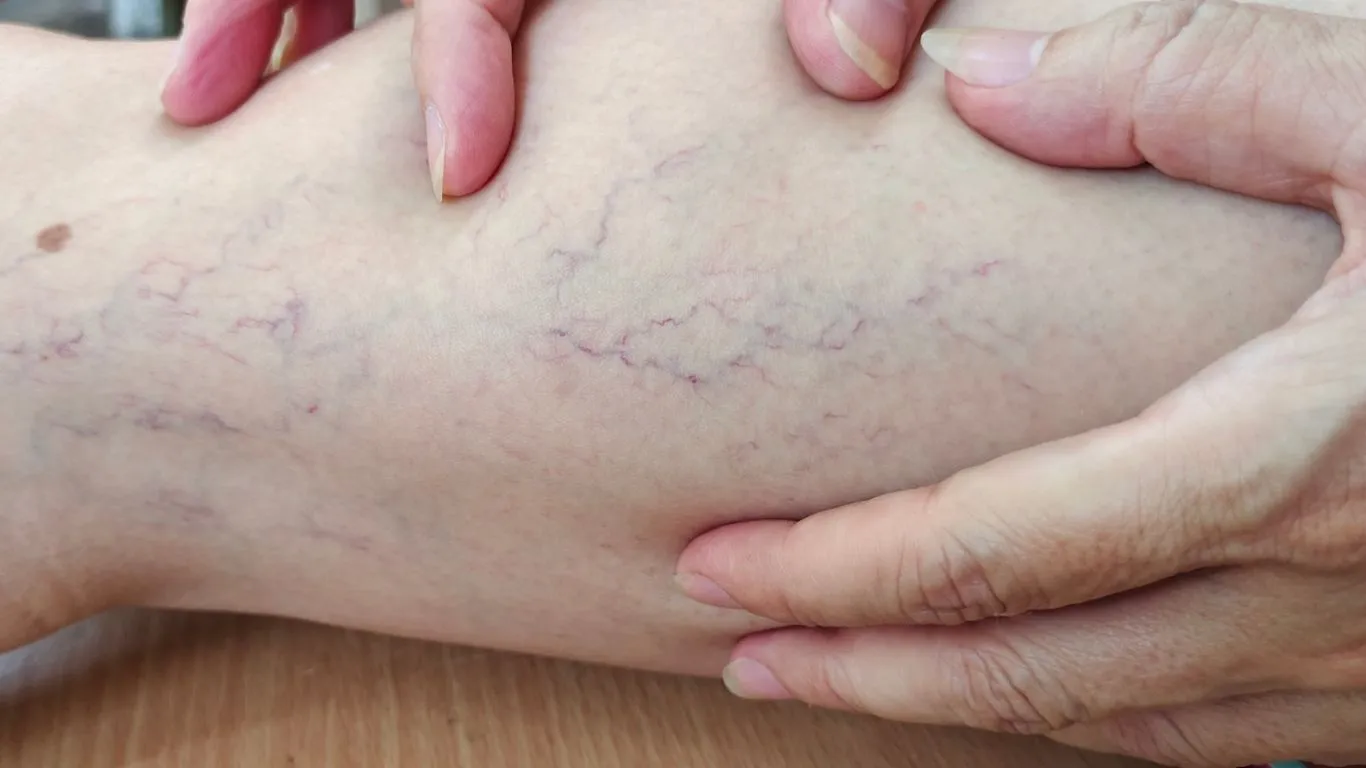
21 Aug Laser Treatment for Spider Veins
Spider veins, also known as telangiectasia, appear as thin lines, branches, or networks on the skin, and can be blue, red, or purple in color.
Although they generally do not cause pain or harm, their appearance can be bothersome, prompting individuals to seek treatment options.
Laser therapy is one of the modern techniques developed for treating This condition. How does it work, and is it truly effective?
Laser Treatment for Spider Veins
Laser treatment for spider veins is performed in medical clinics, where laser beams are directed at the affected veins to eliminate and destroy them without causing harm to the skin.
The procedure typically lasts between 15 to 60 minutes, depending on the number of spider veins present.
A notable feature of this treatment is that it does not require general anesthesia, and results can be seen relatively quickly.
Additionally, recovery is swift, and there are no serious complications associated with it.
Note: Most individuals usually require 1 to 3 laser sessions to treat spider veins, depending on the severity and number of visible veins.
The interval between sessions is approximately one and a half months.
Effectiveness of Laser Treatment for Spider Veins
Laser treatment for spider veins is highly effective.
According to studies, some types of lasers used for this purpose achieve a success rate of 98-100% in removing spider veins.
Read More: Medical adhesive injection (VenaSeal) for Treating Varicose Veins
Side Effects of Laser Treatment for Spider Veins
This treatment is generally safe, but it may cause some minor and temporary side effects that are easily manageable.
These include:
- Mild Redness: This usually resolves on its own within a couple of days.
- Swelling, Bruising, or Skin Discoloration: These effects are temporary and can be minimized or prevented by wearing compression stockings.
- Slight Discomfort During the Procedure: This sensation is often similar to the feeling of a rubber band snapping against the skin.
This discomfort can be reduced with the application of a topical anesthetic.
Post-Treatment Instructions for Laser Treatment of Spider Veins
Key post-treatment instructions include:
- Apply Cold Compresses: Use cold compresses on the skin to reduce swelling and discomfort.
- Avoid Blood Thinners: Refrain from taking blood thinners such as aspirin or warfarin in the initial period after the session if bruising occurs, as these can exacerbate bruising.
- Avoid Sun Exposure and Tanning: Stay out of direct sunlight and avoid tanning treatments for at least 3 weeks following the session.
- Use Sunscreen: Apply sunscreen on the skin before going outdoors.
- Keep the Skin Moisturized: Continuously hydrate the skin throughout the day.
- Elevate the Legs: If the spider veins treated were on the legs, keep the legs slightly elevated above the level of the body.
- Avoid Scratching: Do not scratch any blisters or scars that may appear.
- Limit Physical Activity: Avoid vigorous aerobic activities such as running, long-distance walking, or intensive exercise for the first three days following the session.
Contraindications and Precautions for Laser Treatment of Spider Veins
Key contraindications and precautions include:
- Individuals with Very Dark Skin: Laser treatment may not be suitable for those with very dark skin tones.
- Recent Use of Isotretinoin: Individuals who have used isotretinoin (Accutane) within the past 12 months should wait at least one year after the last dose before undergoing treatment.
- Active Herpes Simplex Infections: People with active cold sores (herpes simplex) should receive antiviral medication (e.g., acyclovir) prior to treatment.
- Pregnant Women: It is advisable to postpone sessions until after pregnancy.
- Recent Tanning: Individuals who have recently undergone tanning should avoid laser treatment until the tanning effects have diminished.
Frequently Asked Questions
How long does it take for spider veins to disappear after laser treatment?
It typically takes 2 to 6 weeks for spider veins to disappear after laser treatment.
The results are not immediate; the veins gradually change color from dark blue to light red and eventually fade away over time.
Can spider veins return after laser treatment?
Yes, it can return after laser treatment.
Laser treatment is a therapeutic procedure rather than a preventive one, meaning it eliminates existing spider veins but does not prevent new ones from appearing in the future.
However, additional sessions can be scheduled if new spider veins develop to treat them.
References:
- https://www.medicalnewstoday.com/articles/324276
- https://www.aad.org/public/cosmetic/younger-looking/how-dermatologists-treat-leg-veins
- https://www.albertvein.com/blog/2020/march/how-long-does-varicose-vein-and-spider-vein-remo/
- https://missouriveinspecialists.com/2021/05/14/what-to-expect-from-your-first-laser-vein-treatment-session/
- https://themedicallaserclinic.com/laser/laser-vein-treatment/
- https://foxveinexperts.com/what-is-the-success-rate-of-laser-treatment-for-varicose-veins
- https://xagemedicalspa.com/blog/what-are-the-side-effects-of-laser-vein-removal
- https://www.drkryger.com/plastic-surgery-thousand-oaks/non-surgical/laser-vein-treatments/
- https://www.rejuven8cosmetix.com.au/wp-content/uploads/2017/01/FACIAL-LEG-VEIN-LASER-TREATMENT-AFTERCARE.pdf
- https://mydermahealth.com/pre-post-care-instructions/pre-post-laser-vein-reduction-instructions/
- https://www.ncbi.nlm.nih.gov/books/NBK563218/
- https://www.laserbeautyworks.com/spider-vein-removal-laser-treatment
